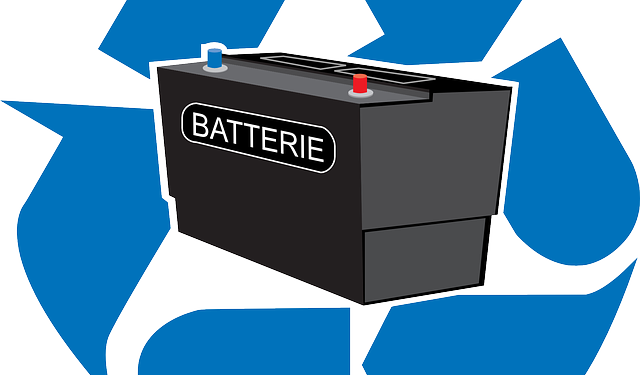From the perspectives of both household and industrial trash, used batteries have been a problem for decades. Even the most sophisticated rechargeable lithium-ion batteries may still contain hazardous elements, even though battery technology has undergone significant improvement. The issue extends beyond environmental pollution. Poor handling, storage, and disposal practices could raise the risk of fire or poisoning during the end-of-life stage of any modern electronic item.
The true “battery crisis” is still ahead of us, which is a much worse concern. Additionally, we’re not simply discussing li-Ion power banks for phones. The major problem will be how to get rid of so many batteries from electric cars, but we should be able to do it with the equipment of recycle electric car batteries. Fortunately, recycling lithium-ion batteries are beginning to spread widely.
An extremely reactive element is lithium.
Ignoring chemistry, let’s just say that it wouldn’t be a good idea to throw a lithium battery into a bin of recycled paper. The possibility of the power cells catching fire exists due to elevated heat or electric discharge. Although these cases are uncommon, they are being recorded more frequently. Stockpiling water li-ion batteries poses a threat to the safety and the environment even when done appropriately. Because these batteries cannot be directly reused like other materials can, recycling is the only workable solution. Additionally, recycling lithium batteries lessens the need for fresh mineral extraction, which is always good for the environment.
The heavy metals they contain are Environmental Hazardous
When it comes to lithium-ion batteries and their effects on the environment, there is some misunderstanding. There is some validity to the claims made by major electronics manufacturers that lithium is one of the least hazardous metals used in batteries. When Li-ion battery disposal takes place some of their metal components, even in relatively small amounts, can cause significant harm. These batteries leach nickel, cobalt, and manganese into the environment when they are disposed of in landfills. not to mention dangerous polymers and lithium salts. As if that weren’t bad enough, lithium-ion batteries have the potential to spark underground fires that burn slowly for a very long time, contaminating nearby rubbish with hazardous chemicals.
Harmful to humans When faulty or damaged
Batteries can already be dangerous when they are placed with curb side trash, so there is no need to wait until they are disposed of in a landfill. Lithium-ion batteries that have been damaged may emit the infamous PM10 and PM2.5 fine particles, which have aerodynamic dimensions smaller than 10 or 2.5 m. The issue is that these particles include elements like arsenic, cadmium, chromium, cobalt, copper, or lead that are bound to matter. Several health issues, including cardiovascular and respiratory disorders, cancer, and endocrine system imbalance, can be brought on by dust entering the respiratory system. A dangerous gas called hydrofluoric acid (HF) can escape from depleted lithium-ion batteries. Because it is so extremely corrosive, HF can enter the body through the skin or by inhalation. The skin is easily penetrated, and it settles in deeper layers where it releases its harmful components. According to estimates, the battery pack of an electric car has the potential to produce between 20 and 200 mg of HF per W.
Possibility of Fire
Additionally, it’s critical to dispose of lithium-ion batteries safely because they might catch fire if handled or stored incorrectly. Over 95% of the burst or blown batteries that Green Citizen receives are from Apple devices that employ the Lithium Polymer (LiPo) type. Some of us still have memories of the recall of mobiles by reputable companies when Li-ion batteries were at risk of exploding due to faulty construction and overheating. The thermal runoff effect is when a lithium cell essentially self-heats, bulges and ignites.
Can pollute groundwater
One of the most important risks associated with landfilling is leachate. Rainwater soaking through the garbage and biological, chemical, and other reactions result in leachate. Leachate can spread dangerous organisms and chemicals across great distances, damaging groundwater and solid surfaces along the way. In addition to the results of electrolyte degradation and heavy metals, lithium-ion leachates may also contain dissolved gases like HF, HCl, or SO2.
Take note of the embedded value
The inherent value of lithium-cobalt oxide batteries, which are found in most consumer electronics, is relatively high, and cobalt and copper recovery alone can make recycling these batteries profitable. In the short to medium term, outdated consumer devices could be a significant supply of cobalt, but hoarding, collection, and distribution issues make this unlikely. To maximize value, multiple businesses are creating and commercializing a variety of recycling techniques and their combinations to recover more material from Li-ion batteries.
Cut down on supply chain risk
The consequences of relying on external raw materials and battery supplies are becoming more and more of a concern for the major electric vehicle markets in Europe and the USA, and they are actively working to develop a domestic supply of essential materials, including those found in Li-ion batteries. While Europe lacks resources, the US has access to important ones like graphite and lithium. Recycling, or producing end-of-life or trash batteries, could thus be a crucial resource allowing for some supply diversification.
Conclusion
Batteries made of lithium-ion material can be recycled, but only in designated facilities. They must be recycled at a battery drop-off facility or a residential e-waste collection site when they are discarded. Undoubtedly, the electrical risk needs to be properly considered. Due to their ability to provide higher voltages, high-capacity batteries can be dangerous for electric shock. However, extra care must be taken while handling lithium-ion (li-ion) batteries throughout the end-of-life stage of electronic equipment. Incorrect handling of batteries increases the risk of fire, pollution, and other bad outcomes. Even while Li-ion batteries can be recycled, if existing practices for managing these used batteries continue, most of those batteries may wind up in landfills. The valuable metals and other materials found in these well-liked power packs can be salvaged, processed, and utilized again.









